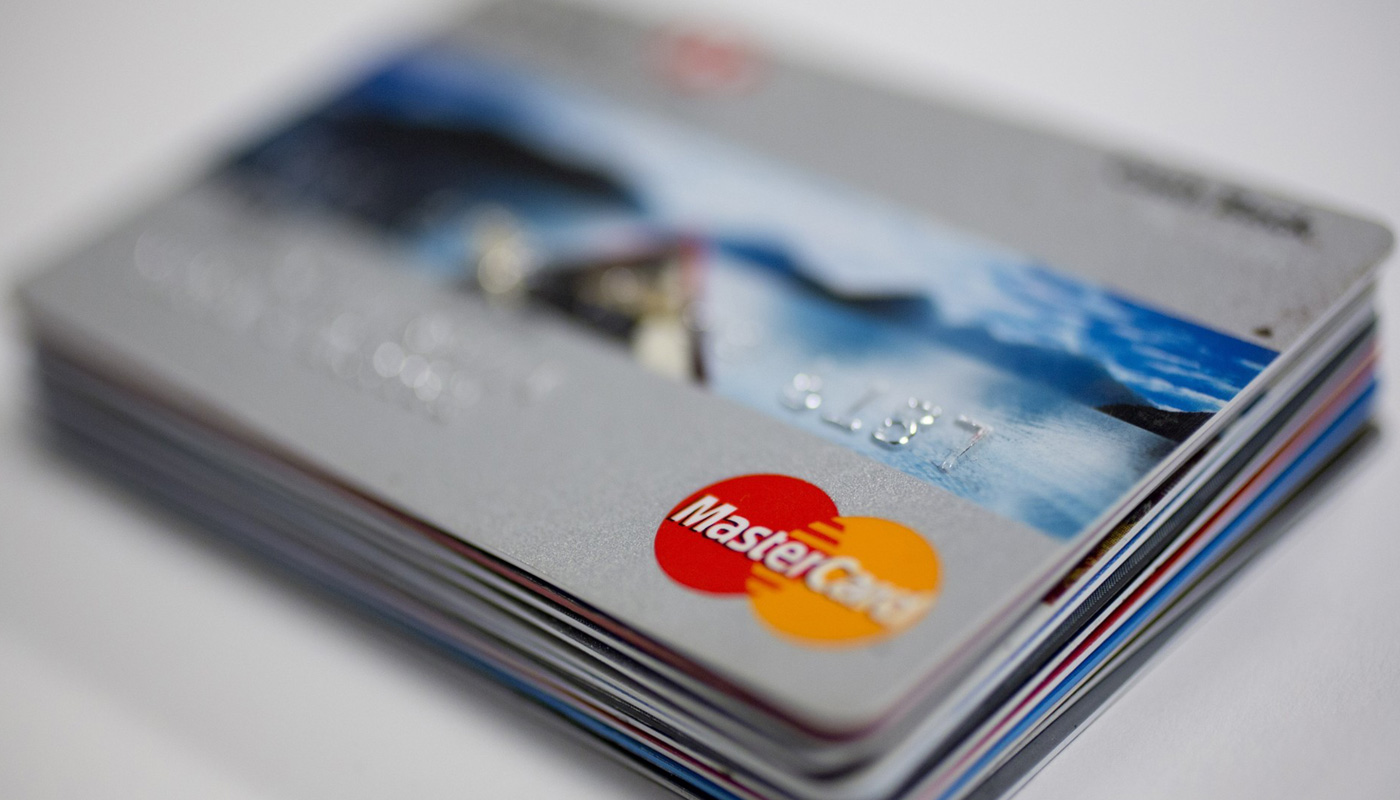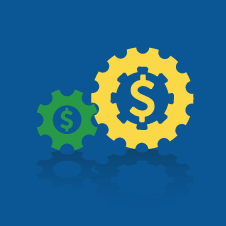by Blaine Rollins, CFA, 361 Capital
Plenty of spelunking in D.C. this year. Last week it was the Federal Reserve’s turn to lose buckets of credibility by caving on their goals to shrink the Fed’s balance sheet. While it was clear that future Fed Funds rate increases would be unlikely, a halt of QT and possible return to QE sent a strong signal that the Fed is either very worried about the U.S. economic outlook, or scared crazy by the December market meltdown. The U.S. jobs numbers might be strong today, but they can be wiped off quickly by a melting global economy, global trade tariffs and a fragile financial market. So the bottom line for now is that the Fed Put is now back on the table.
Earnings season is now 50% behind and ahead of us. The Q1 earnings story remains the same: “Better than Feared.” While the earnings outlooks and averages continue to recede, it is shaping up as a quarter of disaster avoidance. With that, and the appetite for risk high, most all reporting stocks continue to see very good post-report performances. The market may look overbought today versus at the end of 2018, but with the Fed now your portfolio’s best friend, it is anyone’s guess as to what the appropriate market multiple might be for this uncertain environment. Many of us would like to see the two-year Treasury yield recover toward its recent highs near 3% rather than flounder at 2.5%. Others would like to see Bank stocks get back on track. But for the near term, with the Fed flipping a u-turn on QE, what does look certain is that the U.S. Dollar will now be under pressure which should put a wind to the back of commodities and emerging market stocks and bonds. Only five weeks in and what a crazy 2019 we have had. Now bring on that 15 handle on the VIX!
To receive this weekly briefing directly to your inbox, subscribe now.
Maximum uncertainty…
Markets tend to veer between two extremes: fear and greed. But right now, the dominant emotion appears to be confusion.This may seem strange. After all, global equities have just notched up their best month in more than three years, as the panic that gripped investors in December has dissipated. The bond market has also clawed back most of the losses it suffered last year, helped by the US Federal Reserve’s abrupt decision to pause interest rate increases and willingness to re-examine how quickly it will sell its bond holdings.
And yet, many investors admit a gnawing and growing unease. Where once there was certainty — whether bearish or bullish — there is now mostly doubt and indecision. As one top hedge fund manager says: “No one has a view, and everyone is positioned accordingly.”
Some think the new year rally will fizzle out, but are too cautious to bet on it given how painful being in cash or “short” can be if markets keep climbing. Others think another extended bull run is on the horizon, but are still nursing the wounds inflicted by 2018 and fear being pummelled should turbulence return.
Investors equally confused as they continue to pull funds from U.S. equities…
Can’t argue with Goldman Sachs’s current four key variables for investors…
Stock prices have whipsawed during the past two months. News flow on four variables will determine the direction of US equities: (1) Fed policy, (2) China economic growth, (3) trade policy, and (4) earnings revisions. What matters most to the performance of stocks is the marginal change in each of the variables relative to investor expectations. This week’s information flow on Fed policy was more positive than market expectations and shares climbed by 2% and are now up 8% YTD. China economic data has been weaker than expected. Uncertainty surrounding the trade dispute with China remains high. 2019 S&P 500 EPS estimates have been cut by 2% during the past month and by nearly 4% in the past three months.
(Goldman Sachs)
Don’t fight the Fed…
As Tim Duy writes, for the Fed to help the economy, it must help the markets. And last week it came to the conclusion that it wants to try to avoid another December meltdown by telling the markets that it is willing to back off the balance sheet shrink to fight financial market instability. So there you go, the Fed once again has your back. And the VIX moves into the mid-teens.
The stock market isn’t the economy, but it is sufficiently connected with the economy that it can’t be ignored by the Federal Reserve. Eventually, central bankers must respond to protracted turmoil in financial markets. That means it will be very difficult – if not impossible – to differentiate between a “Fed put” on the economy versus on the stock market. Rather than complaining about the “Fed put,” market participants should embrace it – or at least not bet against it.
In the opening remarks to his post-Federal Open Market Committee press conference Thursday, Fed Chairman Jerome Powell noted that financial “conditions tightened considerably late in 2018, and remain less supportive of growth than they were earlier in 2018.” This is a fairly clear indication that the Fed’s declaration that they will be “patient” before making its next policy move was driven in part by the market turmoil in the fourth quarter.
Did Powell surrender to the markets? Sort of. I have long said that there is a “Fed put” on the economy, and that it can’t indefinitely ignore market turmoil. To be sure, the Fed will tend to dismiss normal market volatility in favor of data, but persistent, substantial market volatility suggests rising downside risks to the economy.
The issue for the Fed is that it can’t react to the downside risks to the economy without looking like they are reacting only to the markets. The two can thus be observationally equivalent. A “Fed put” on the economy will look like a “Fed put” on the markets, despite the fact that the Fed clearly doesn’t react to every dip, even substantial ones, in the stock market. After all, the Fed kept hiking even after the S&P 500 Index fell some 10 percent between late January and the start of April 2018.
Looking at this chart, you might want to pay more attention to Fed pauses…
Before the onset of each of the last four recessions (1981, 1990, 2001 and 2007), the effective federal funds rate had peaked and was already falling by the time the business cycle turned down.
In fact, the federal funds rate peaked shortly before almost every recession since 1960 (the limited exception was the recession starting in 1980).
Peaking interest rates have often been a harbinger of an imminent recession as the Fed responds to signs that the expansion is running out of momentum.
In every one of those cases, even interest rate reductions were not enough to prevent the economy turning down a few months later.
So while the Fed’s promise to be patient will be welcome in the White House, it is an indication of how much the outlook has already deteriorated, and reinforces the reasons for investors to be cautious.
(Reuters)
The squealing Fed tires sent EM Stocks and Commodities soaring…
Only major asset in the red was of course, the U.S. dollar.
A quick glance at what geographies are working best for U.S. based investors and you will find plenty of EM…
Another weekly reminder that stocks are cheaper outside of the United States…
@Callum_Thomas: Interesting….. “U.S. stocks have never been more overvalued relative to the rest of the world.”
Among sectors last week, earnings and oil prices had a big hand in the returns…
With half of the major companies having reported, the results do not look so good…
But the market was expecting worse, so stocks have bounced…
@bespokeinvest: Stocks reactions to earnings so far this earnings season have been incredibly strong.
A good example of “Better than Feared” was at Apple as J.P.Morgan describes…
The big highlight was AAPL – the Dec Qtr wasn’t really in question given the preannouncement and investors were watching the March guide and it was better than-feared. They see Mar revs ~$55-59B – this compares to the print consensus at $59B but there were fears of a range down at $55-56B so investors consider this outlook a victory.
Last bulk week of corporate earnings and then we tail off until the April earnings period…
While U.S. earnings revisions are in retreat, it is worse overseas…
A similar story out of the global PMIs last week: U.S. was expanding and the rest of the world was bordering on contraction…
Growth of the global manufacturing sector slowed closer to stagnation in January. At 50.7, the J.P.Morgan Global Manufacturing PMI™ – a composite index1 produced by J.P.Morgan and IHS Markit in association with ISM and IFPSM – fell for the ninth straight month to its lowest reading since August 2016.
The US remained one of the stronger performing nations in January, with its PMI rising to buck the slowing trend seen at the global level. Moreover, if US data were excluded from the Global Manufacturing PMI calculation the reading would have been 50.0, a level signalling stagnation. The slowdown in China manufacturing was the main drag, as the China PMI fell to a near three-year low. The euro area and Japan PMIs fell to 50- and 29-month lows respectively.
The U.S. Government shutdown caused upticks in the U-3 and U-6 unemployment rates…
Now let’s see if these return to the recent lows or if the upward cycle is about to begin.
Small firms can quickly move the hiring figures so their reduced confidence should be concerning…
After a banner year, many small businesses are becoming more cautious about their investment and hiring plans. Some are responding to early signs of slowing sales, while others fear that tariffs, unstable financial markets, the aftereffects of the government shutdown and other headwinds could damp economic growth in 2019.
Economic confidence among small firms, which edged downward for much of 2018, in January reached its lowest level since President Trump’s election, according to a monthly survey of 765 small firms for The Wall Street Journal by Vistage Worldwide Inc. (Vistage polls firms with between $1 million and $20 million of revenue.) Just 14% of firms expect the economy to improve this year, while 36% expect it to get worse.
For the first time since the 2016 election, small firms were more pessimistic about their own financial prospects than they were a year earlier, including plans for hiring and investment, according to the survey, which was completed shortly before the 35-day federal shutdown ended.
(WSJ)
Ban returns of capital to investors? Why not just drink boiling mugs of corn syrup?
There may not be a worse idea for a capitalistic country. These two Senators want to ban investors from getting a return on their ownership in a company until a government agency picks its winners and losers. It is called a free market for a reason. Those companies that are focused on the long game and equally reward shareholders, employees and customers get rewarded a premium multiple. Two great examples of companies that have done this over the long haul are Costco and Starbucks. And, those companies that sacrifice the long-term for short-term gaming of the numbers typically get into trouble, like Sears and GE. Good companies get rewarded and bad companies get punished.
Banning stock repurchases and dividends will crush stock valuations because what investors will want to own shares of corporations if they can’t generate a return on their investment? And given that pension and retirement plans own about 40% of U.S. corporate stocks, this idea will not only hurt households that own stock directly, but also anyone with a retirement plan or pension.
If you want to stop companies from paying dividends and repurchasing stock, give them a reason to invest in their U.S. companies. Both consumer and business uncertainty is running at elevated levels right now because companies don’t know what the future rules might be for tariffs, trade, interest rates, government regulation or even whether or not the government will be open. If Washington D.C. could act and behave with more stability and direction, then businesses would feel better about spending money on capex and hiring decisions.
That is why we are planning to introduce bold legislation to address this crisis. Our bill will prohibit a corporation from buying back its own stock unless it invests in workers and communities first, including things like paying all workers at least $15 an hour, providing seven days of paid sick leave, and offering decent pensions and more reliable health benefits.
In other words, our legislation would set minimum requirements for corporate investment in workers and the long-term strength of the company as a precondition for a corporation entering into a share buyback plan. The goal is to curtail the overreliance on buybacks while also incentivizing the productive investment of corporate capital.
Some may argue that if Congress limits stock buybacks, corporations could shift to issuing larger dividends. This is a valid concern — and we should also seriously consider policies to limit the payout of dividends, perhaps through the tax code.
A timeout for a history lesson in Socialism…
Every elected official in Washington D.C. would learn much from reading all of Howard Marks’ newest memo…
To receive this weekly briefing directly to your inbox, subscribe now.
There are those who will read the Howard Marks’ memo and those who won’t…
Another reminder that any increased slowdown will not treat private debt kindly…
“Direct lending has been the strategy du jour — when we see stresses we’ll probably see it there first,” says Jim Smigiel, head of portfolio strategies group at SEI Investments, near Philadelphia. He doubts the market is extensive enough to cause systemic problems, but “a lot of people will lose a lot of money”, he predicts.
Private debt investors admit that the flood of money has dramatically eroded both standards and returns. KKR estimates that the average private debt yield has now fallen to about 6-8 per cent, down from the low teens a few years ago. That is only slightly higher than in the mainstream junk bond market, which is actively traded and far more transparent.
“It puzzles me,” says the head of one credit hedge fund that has shunned private debt. “They’re lending to complete shit at a spread of 100-150 basis points above high yield.”
Even inside the industry there are concerns. Some say falling rates have spurred investors to borrow some of the money they deposit with private debt funds, in an attempt the juice the returns. One private debt fund executive, speaking on condition of anonymity, even sees similarities with the pre-crisis subprime mortgage market.
Speaking of credit…
Construction on Oceanwide Plaza, one of the biggest real estate development projects in downtown Los Angeles, has stalled in what may be a shortfall in financing from the project’s Chinese owner.
The condominium, hotel and retail complex across the street from Staples Center is expected to cost more than $1 billion and be a key part of the flashy entertainment, hotel and residential district emerging along Figueroa Street.
The plaza is being built by Oceanwide Holdings, a Beijing-based publicly traded conglomerate that reported revenue of $2.37 billion in 2017. The company said in a statement Thursday that the hold-up is due to a recapitalization of the project and that work will resume by the middle of next month.
Any halt of a Chinese-backed real estate project, however, is bound to raise concerns that it may be related to Chinese government policies restricting the flow of money out of the country. The policies, put in place in 2016, sent shock waves through real estate circles because China has become a major investor and developer in the U.S.
(LA Times)
Amazing video of the week…
Must deposit this recommendation in my office building’s suggestion box ASAP!
Copyright © 361 Capital




































